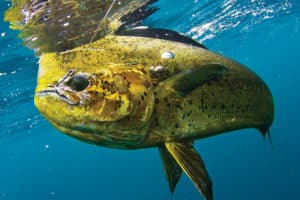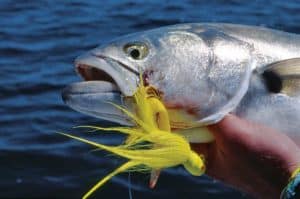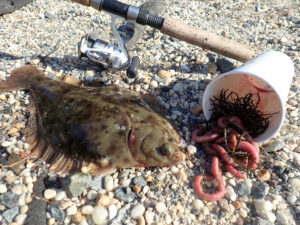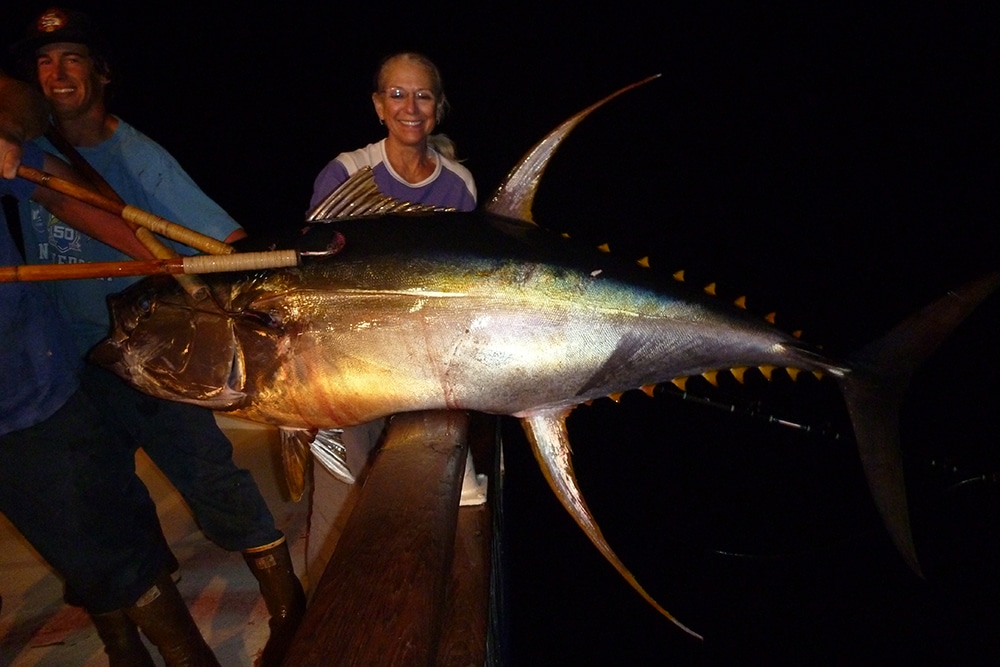
Stand-up fishermen targeting big yellowfin tuna aboard San Diego’s long-range boats expect to spend more time fishing than sleeping at night. The night game for them started in the early 1970s when most of the biggest monster tuna tackled off Mexico’s Revillagigedo islands came at night.
More recent innovations in tackle, kites, balloons, chunking techniques and a dependable supply of live sardines have improved the odds of hooking big fish by day. But fishing at night remains the best time to hook and land the biggest tuna. Why? In large part, the darkness permits anglers to use optimal (heavy enough) gear to get the job done without spooking wary tuna. Knowing the right gear and techniques can up your catch rate, not only off Baja, but anywhere anglers fish yellowfin by night.
The Night Fishing Advantage for Tuna
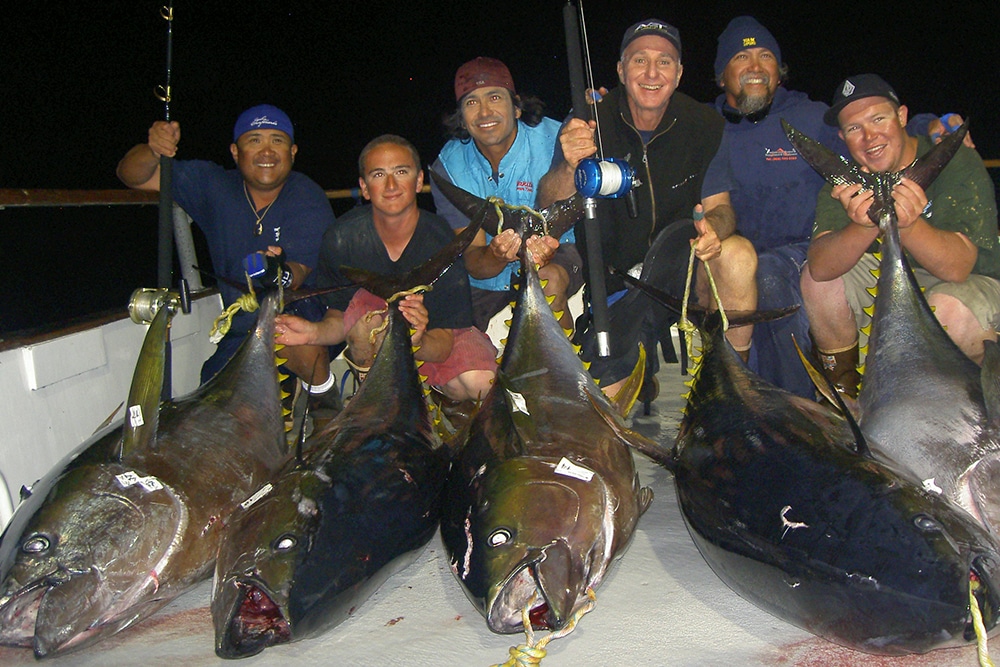
No Rest for the Weary
Fishing under the cover of darkness provides a distinct advantage over daytime tuna techniques because gear size and strength — leaders, hooks, outfits and line — can be greatly increased. “When there’s a sign of big yellowfin in the neighborhood, you’ll want to fish the heaviest gear possible,” says Steve Loomis, skipper of the long-range boat Royal Polaris.
Capt. Rollo Heyn, also a Royal Polaris skipper, recalls a night long ago when, “We got into an exceptional bite for tuna. It was full speed ahead with the heavy gear, and the boat ran completely out of bait by 10 p.m. When the dust finally settled, there were 10 yellowfin on the deck, each over 300 pounds! That’s a perfect example of why anglers have to be ready to fish for tuna in the dark.”
That action came early in the evening, and, most often, “Prime time means having lines in the water a few hours on either side of sunset and dawn,” says Capt. Tim Ekstrom, of the Royal Star. He adds that the dawn bite often begins around 3:30 or 4 a.m. That’s not to say that long-range boats always find tuna at night. They may not show, Ekstrom says, “so we look for (favorable) bait and water conditions prior to waking passengers from their cozy bunks.”
Break Out the Chunks
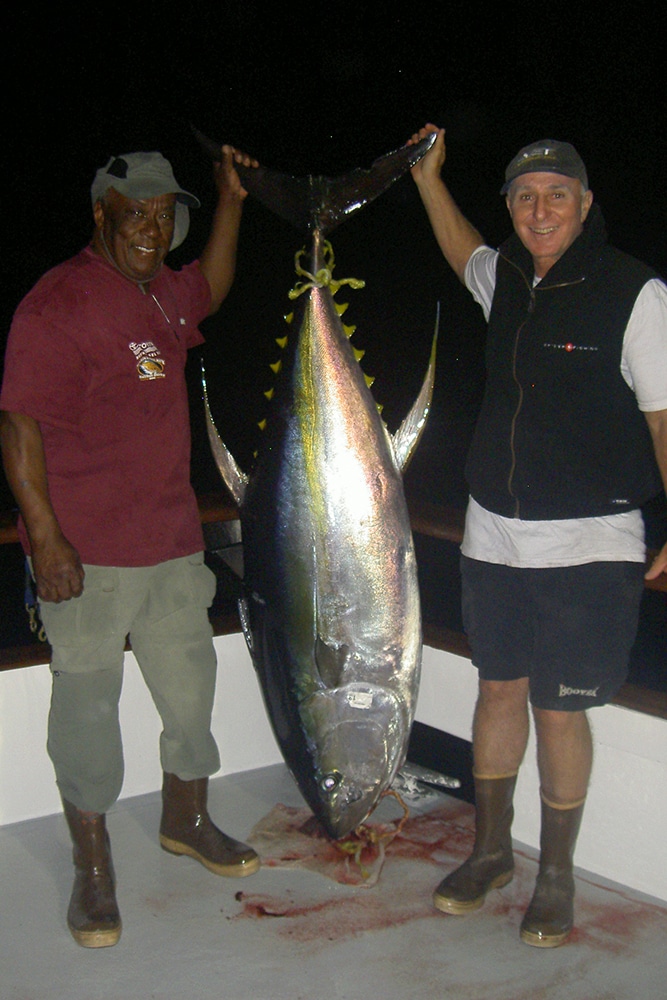
Holy Cow
Yellowfin in any ocean seem to respond to chunks or live-bait chum. Once a long-range boat is anchored over a favorable area, it’s time to start a constant chunk line — either cut mackerel or fresh tuna chunks tossed overboard every half-minute to minute. Although passengers fish (and score) using both chunk and live baits, Ekstrom says, “It seems like when the big yellowfin want to bite full-speed at night, they like the ‘salamis’ — the large, greenback mackerel.”
And most likely to get bit at night, according to Ekstrom, are those who refrain from tossing baits far away from the boat. “I can’t stress how important it is to keep your bait as close to the boat as possible,” he says, “preferably straight up and down within 50 to 75 feet of the boat. This is where the majority of larger yellowfin are hooked.”
As good as live mackerel or small jacks (Mexican caballitos) may be at night, there are times when chunk baits score big. In fact, many veterans consider fishing chunk bait the key to really big fish. For Tommy Rothery, who skippers the Polaris Supreme, “The majority of big cows — yellowfin over 200 pounds — fall for chunks. I think that’s because of the amount of food these fish must consume just to survive. They enter into the chunk line and get into a feeding pattern where all they want is chunks.”
Pre-Twilight Preparation
“You’re hating it if you wake up to a wide-open yelowfin bite and find your gear in shambles,” warns Capt. Jim Reed, of the Qualifier 105. He points out that schools of yellowfin can move in and out quickly; rigging during a hot bite wastes time and may rob you of a second shot at a group of fish. After a long day (or night), take time to pack fresh mono on your reels, re-check drag settings, inventory leaders and organize tackle. Inspect roller guides to ensure that retaining screws are tightened correctly and that rollers are running smoothly.
Post-Twilight Tactics
Regardless of whether you favor fishing live baits or chunks, don’t cut corners when it comes to gear and rigging. Depending on the type and size of bait available, the business end of your rig should have a 4/0 to 10/0 forged circle hook crimped to a 3-foot section of 130- to 250-pound mono or fluorocarbon leader. I’ve found that fluorocarbon offers incredible abrasion resistance in the jaws of an exceptionally large fish.
When chunking, add a 4/0 barrel swivel to the top of your leader to reduce the possibility of line twists. With live bait, on the other hand, consider passing up the swivel in favor of a compact welded ring with a minimum 200-pound rating. You can also double your main line using a bimini twist, always preferred at night but not during the day when you need a single line.
At times, even big tuna will be feeding on smaller fish; then, rigging to use small live baits makes sense. I’ve witnessed this around the weather buoys in the Hawaiian Islands as well as off Baja. However, small baits, particularly over structure, can spell bycatch — jacks, triggers, snapper and grouper are all common. A good time to use small baits at night is when currents run heavy, according to Capt. Randy Toussaint of the Royal Star, because the heavy currents tend to make “junk fish” back off.
At such times, he says, “We prefer to use a live sardine, flying fish or small caballito off the bow of the boat with some lead. Hook your bait crosswise through the nose with a small Owner 4/0 to 6/0 circle hook, and place a sliding 4- to 6-ounce egg sinker above a 150-pound leader or a main line doubled with a bimini twist.” Toussaint adds, “Be ready to get picked up on the sink.”
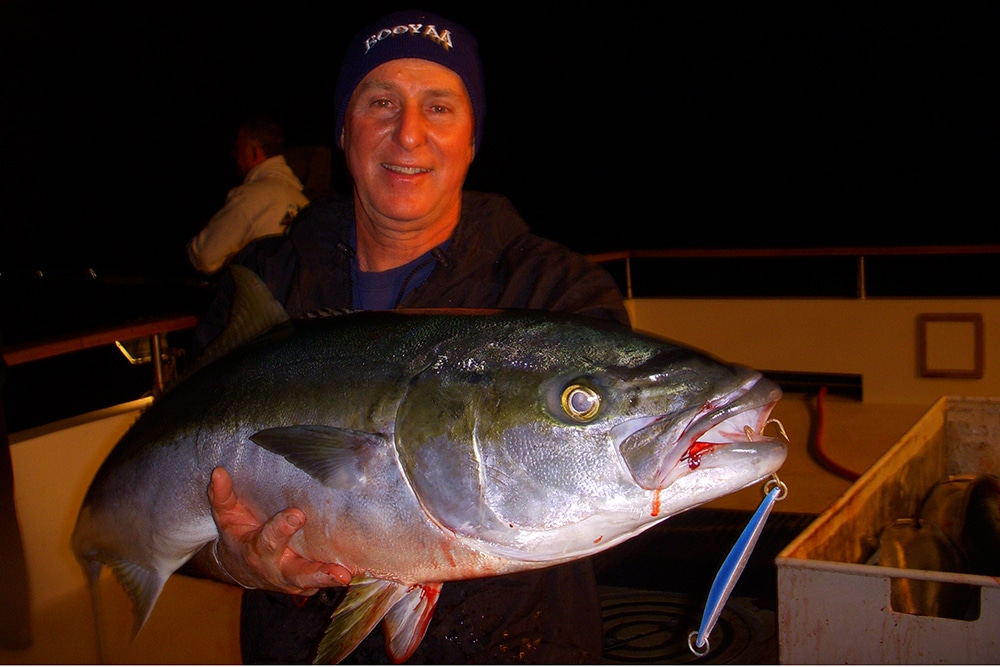
Surprise Yellowtail
Effective as bait is, at times large iron jigs produce well. Toussaint suggests dropping oversize jigs such as a 10- to 14-inch option. “Most of your jig bites will come on the drop — though I watched one hit on the retrieve recently. It weighed 260 pounds,” Toussaint says.
Fishing “iron” also helps foil sharks when they gang up around a boat, attacking any and every bait that hits the water. If you do opt to jig, remember to replace factory treble hooks with a single Mustad 9/0 to 10/0 hook for better strength and holding power.
Time Management Counts
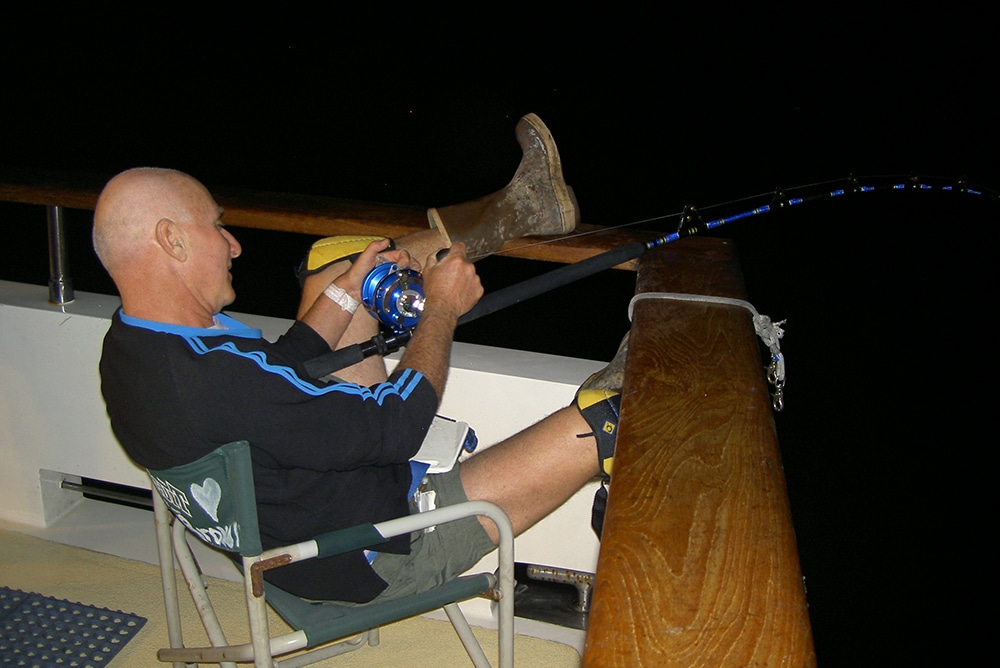
Light Sleeper
Don’t expect to keep a “normal” schedule when pursuing yellowfin at night, particularly over several days or longer, advises Frank LoPreste, skipper of the Royal Polaris. “Depending how long it takes to make bait, I recommend sleeping until about 3 a.m., then fishing hard all the way up till 8 or 9 a.m.”
LoPreste also advises some teamwork when it comes to taking watch so someone’s always keeping an eye on the situation while others nap. “It’s not necessary to burn yourself out,” he advises. Pacing’s important to be ready when the night bite comes. When it’s hot, you won’t have any trouble getting to sleep the next day.

